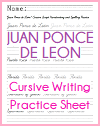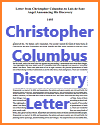Utilizing a variety of educational materials is essential for helping high school World History students understand the Age of European Exploration. This period, marked by global voyages, cultural encounters, and expanding empires, involves complex themes such as technological innovation, economic motivations, and the consequences of colonization. Traditional textbooks provide essential overviews, but incorporating primary sources—like explorers' journals, maps, and ship logs—offers students firsthand insight into the experiences and attitudes of the time. Maps help illustrate changing worldviews, trade routes, and territorial claims, while images of ships, indigenous peoples, and early encounters make abstract content more concrete and engaging.
Documentaries and historical films bring events to life, adding emotion and context to written materials. Educational games or simulations can also help students grasp strategic decisions explorers and monarchs faced. Using a variety of materials appeals to diverse learning styles, fosters critical thinking, and encourages students to explore multiple perspectives—including those of indigenous peoples affected by exploration. This comprehensive approach helps students build a deeper and more balanced understanding of the Age of Exploration and its lasting impact on world history.
|












